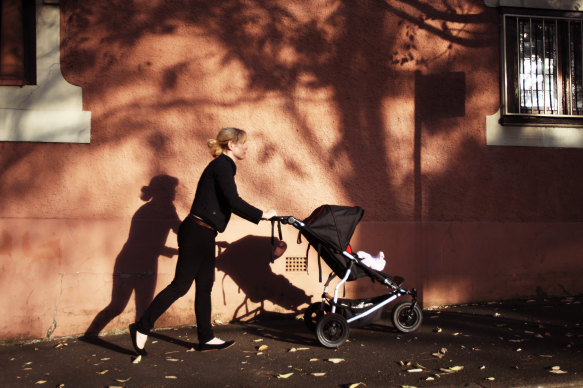How much does having a baby cost? Here’s what you should know
You’ve met the right person or decided to go solo, you’ve cut back on the booze and have your eye on a daycare centre down the road. You’re ready to have a baby.
Then along comes an inflationary surge and a cost of living crisis. You have a slight wobble and wonder if you could cope with a baby and another rate rise. Or you’re not quite sure how another rental increase would affect your budget.
While times may feel uncertain, getting across the latest parental support programs and policies will ease fears and ensure there are no surprises.
Either way, all of a sudden having a baby might not look as financially comfortable as it did 18 months ago.
You’re not alone. The Australian Bureau of Statistics recently announced inflation rose to 7.8 per cent for the year to December and, in the US, research shows that expensive housing markets can delay first births by three to four years.
While times may feel uncertain, on top of the additional uncertainty of trying to get pregnant, getting across the latest programs and policies will ease fears and ensure there are no surprises.
The cost of fertility treatments
It’s a common yet heartbreaking fact that one in six Australian couples experience infertility. For those who need to access fertility treatment, this is often the biggest cost and, unfortunately, doesn’t come with a guarantee of success.
According to IVF Australia, one IVF cycle can cost just over $10,500. Once rebates have been processed, this equates to over $5000 in out-of-pocket expenses. For many parents to be, there may be three or more cycles required.
Medicare does offer rebates for some IVF treatments, and Victoria announced the establishment of its first public fertility care service, however, you should budget for the up-front payments if you need to take this route. It’s also important to note that for those with social infertility, solo mothers by choice or queer couples, two rounds of failed intrauterine insemination must occur before you can access a Medicare rebate.
Government Parental Leave payments
Unfortunately, the ‘motherhood gap’ (the difference in earnings between women and men following childbirth) is real and can have significant impacts on household budgets. Women can expect their earnings to be reduced by 55 per cent on average in the first five years of parenthood.
Parents can expect more financial support under a new parental leave system.Credit:Peter Braig
However, recently announced government policy aims to rectify this imbalance with the new parental leave system commencing in July. From 1 July 2023, parental leave payments will increase by two weeks each year from 18 weeks to 26 weeks by July 2026. Partners can share the payments and non-birthing partners can receive payments at the same time as their employer-funded leave.
To be eligible for paid parental leave you need to have been in your current role for at least 12 months, meet the Centrelink work test and be your child’s primary caregiver. You also must meet the income threshold, having earned less than $156,647, for the 2021-22 financial year.
How do I find out about my workplace’s parental leave policy?
It’s wise to clearly understand your company’s policies before going on parental leave. If you work for a large corporation, call the HR department for anonymous advice. And if you’re employed by a small business, check your contract.
And remember. If you have been employed for over 12 months, you are entitled to 52 weeks of unpaid maternity leave regardless of whether you are a full-time, part-time or casual employee.
What baby essentials should I buy brand new?
While the desire to indulge in adorable baby clothes is often strong, being smart about your purchases is where you can make some significant savings. Ask any second or third-time parents and they’ll agree that you only need to buy the essentials: baby carrier, car seat, pram and a safe place for your baby to sleep.
For anything else, the pre-loved market offers much better deals. It’s abundant with quality products that have hardly been used, and you’ll also help the planet by reducing unnecessary purchases.
How much will childcare cost?
The most significant cost of raising a baby is childcare. Families can currently expect to pay $122 per child per week on average. While the government is working on a policy to make it more affordable, it’s still a significant expense in the weekly household budget.
If you intend to place your baby in childcare, it definitely pays to be prepared. In some areas of Australia where there are fewer childcare options, securing a place can be challenging. And if you plan on placing your baby into childcare and heading back to work, check the daycare fees in advance to ensure it’s cost-effective.
There’s a lot to take in on the path to parenthood. Arming yourself with information will go a long way in ensuring you feel secure, confident and prepared when the time comes for the baby.
- Advice given in this article is general in nature and is not intended to influence readers’ decisions about investing or financial products. They should always seek their own professional advice that takes into account their own personal circumstances before making any financial decisions.
Sophie Walker has a Masters in Public Health, is a mum to three boys, and is the creator of Australian Birth Stories, a podcast that helps prepare mothers for the realities of childbirth.
The Money with Jess newsletter helps you budget, earn, invest and enjoy your money. Sign up to get it every Sunday.
Most Viewed in Money
From our partners
Source: Read Full Article




